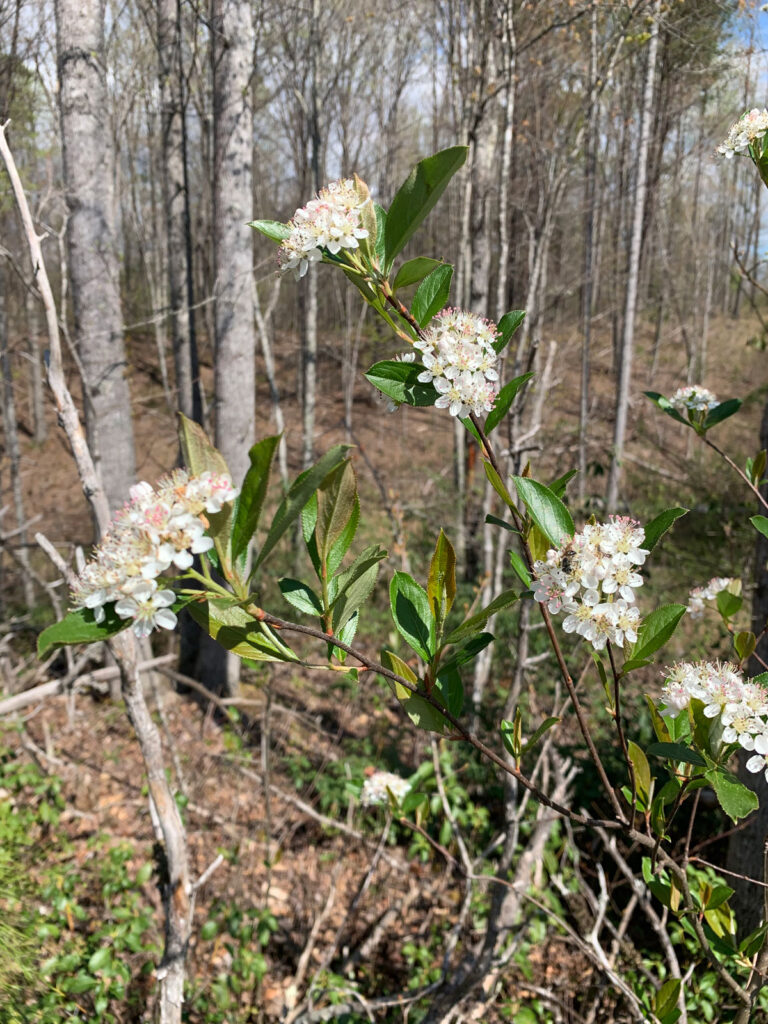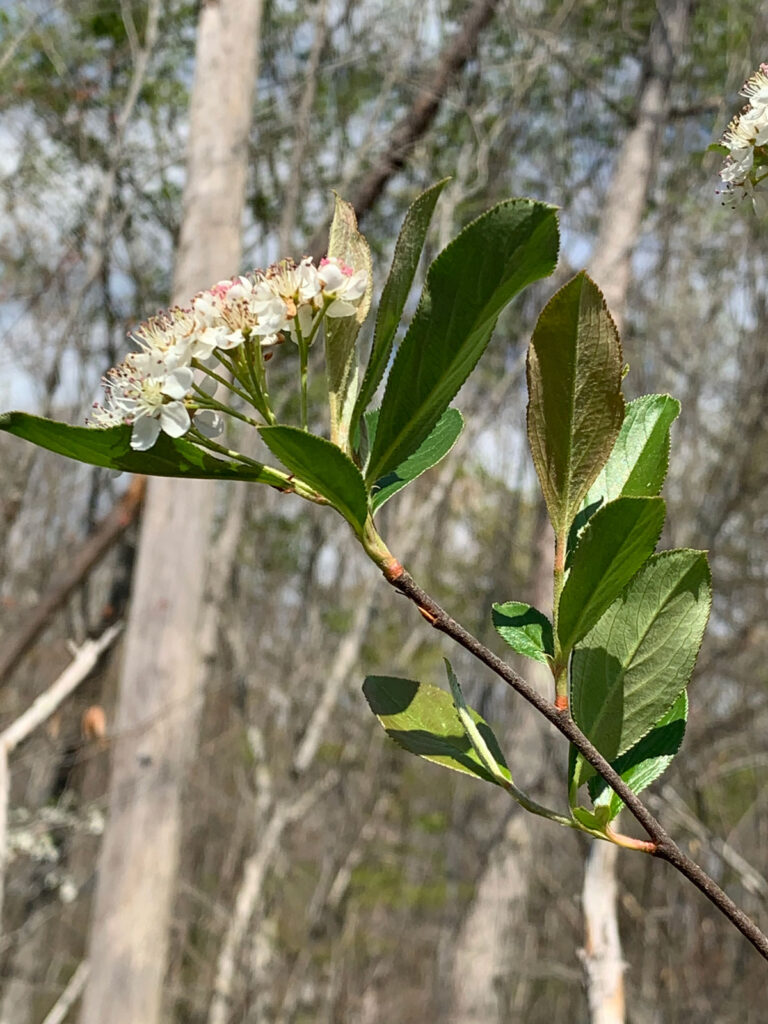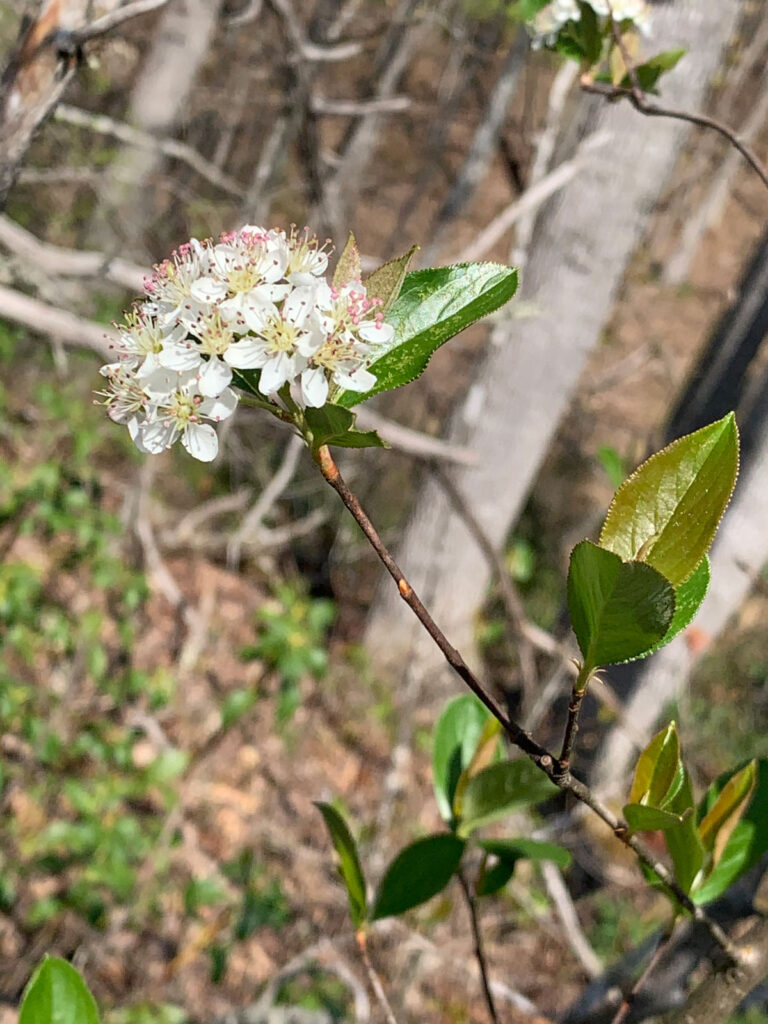Here’s another plant with a very close relative – there’s a black and a red chokecherry. The way to tell them apart is based on their fruit color, and I have yet to catch the fruit at the right time. The other way you can tell them apart is that the under surface of the leaves on a black chokecherry are mostly smooth, whereas they are densely hairy on a red chokecherry. I think I have both here, and will have to go back and check next spring and summer (I’m writing this post late-fall).
Update: This specimen is indeed the Red Chokecherry, as the underside of the leaf was hairy.
I don’t think the fruits on this tree are very tasty, given the common name. Even birds typically ignore these fruits until there isn’t much else available in the winter.
Size: Small shrub Family: Rosaceae (Rose family) Habitat: Common in mountains, rare in piedmont. Heath balds, rocky outcrops, mountain bogs, and forest openings, usually at high elevations. Love sun but can tolerate shade. Identifiers: Multi-stemmed shrub with alternate, elliptical leaves and finely toothed margins. In May and June, small white to light pink flowers appear. Fruit is about the size of a blueberry, deep red in August-September.















